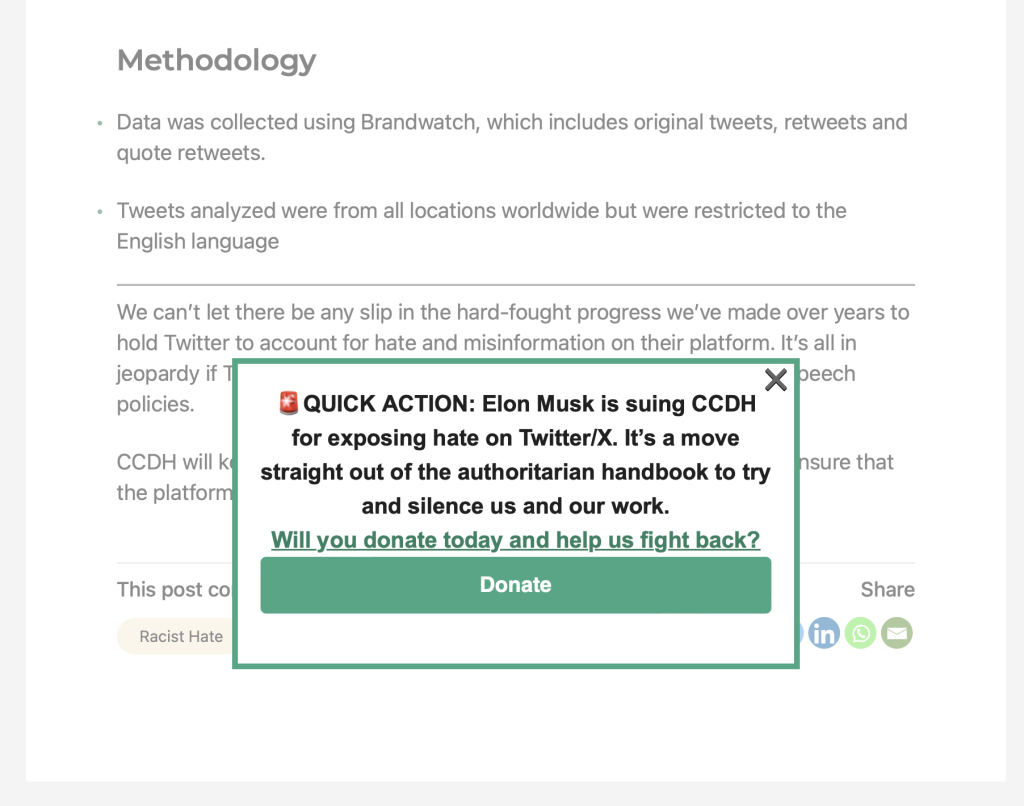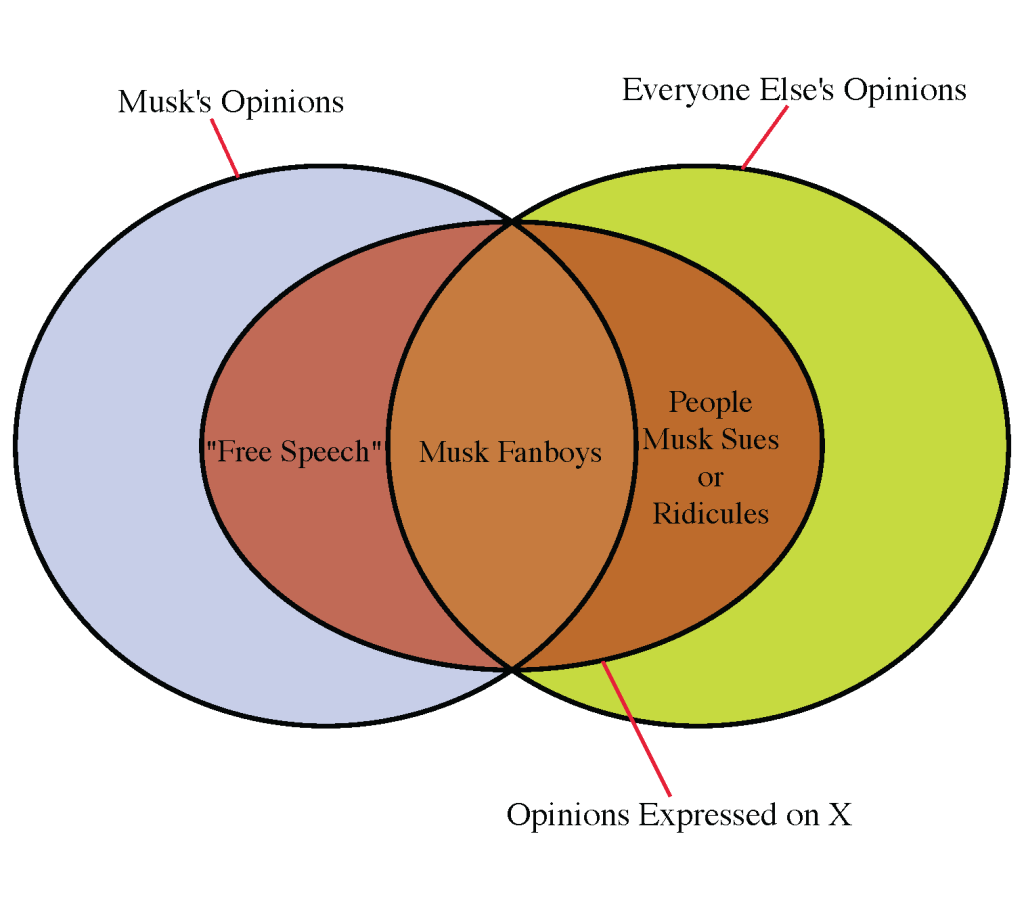I recently read on a Dutch news site that a public television and radio broadcasting organization (KRO-NCRV) had decided to leave X—the social media network formerly known as Twitter—because of recent examples where X failed to prevent or moderate racist messages targeted at a Dutch rap artist. Then, not long thereafter, a high-ranking Dutch government official also announced her departure from X. For similar reasons.
I can scarcely proclaim myself surprised, having already left that vitriolic social media platform sometime mid 2023 for precisely the same reasons; the surge in misinformation, racism, and discrimination ever since Musk took over. And that surge is not just imagined, but has also been objectively verified by researchers (who Musk subsequently sued, see Figure 1). But is leaving X the best approach to dealing with the objectionable content on X?
For example, the Dutch social media expert Scheufler (mentioned in the first news item I link to above) thinks leaving X is a cowardly decision, and points out that racism does not go away by simply leaving a platform. But that argument I would counter with the observation that social media platforms derive a large part of their value from the high profile individuals and companies that have a presence there. When those users leave, that exerts pressure for X to change. When companies leave, then that starves X of much needed advertisement revenue, for example. Racism will not go away… but at least normal users will not be confronted by it and Musk does not get paid to host it.
At the same time, of course, the freedom to express independent thought should not be stifled by overzealous censorship. But let me point out that censorship was absolutely never an issue at Twitter—before it became X—as can readily be concluded from the fact that Twitter was already blocked in a number of not-free countries long before Musk took over. Twitter users have always been given plenty of leeway. Too much leeway actually, even back when Twitter employed an army of moderators. But it was still better than today, and I doubt anyone was surprised that things got a lot worse when Musk got rid of what little basic moderation there was. Except of course when it comes to his own experience on X, then there is plenty of moderation. For example, when he was so irked by an X user reporting all the flights of Musk’s private jet (which is public flight data, by the way) he had him banned from X (that user subsequently moved his account to Mastodon and is merrily continuing the work there). Musk may say that all X users are equal… but clearly some are more equal than others. And make no mistake; Musk may frequently organize polls on some of the decisions, but X is still just his own personal website. That new CEO he appointed changes nothing, as that is just an employee he can just as easily fire again… they don’t work for X, they work for Musk, regardless of whatever legal construct his lawyers may or may not have erected to obfuscate that fact.
Musk’s version of ‘free speech’ appears to be that if someone says something you disagree with, then you just sue them (see Figure 2). A multi-billionaire using frivolous litigation as a bullying tactic. Because when money is water—he’s already the richest man in the world right now and on top of that he basically awarded himself a $56bln bonus1, which is even more than the $54bln financial support package recently approved for Ukraine by the European Union—it doesn’t matter whether Musk wins or loses: the person he targets still has to defend himself in court, with all the financial risks that entails for an individual or non-profit with limited funds. So even if Musk loses the case, he still wins the battle. And how ironic is it that while Musk sets his lawyer team on a hunt like a pack of wolves—to shut someone up for saying something he disagrees with—he simultaneously boasts about all the wonderful freedom of speech on X and happily facilitates the promotion by quacks on X of all kinds of medical misinformation. One famous example is the promotion by these armchair ‘doctors’ of hydroxychloroquine (HCQ) as a treatment for COVID-19, when this drug has never been proven to work against COVID-19 and recent research even suggests a roughly 11% greater fatality rate in hospitalized COVID-19 patients who where treated with HCQ. Thus, his refusal to moderate the medical misinformation posted on his website is potentially resulting in X users getting injured or even killed. Where is the justice in that? Who is going to sue Musk? And why would anyone reward a malignant policy like that by continuing to use X and thereby generate income for Musk?
I honestly hope the end of X is near, for everyone’s sake, and leaving X will certainly achieve that if enough companies, famous people, and government officials turn their backs to X, so that regular users also begin to follow suit. The first signs of that happening may already be beginning to show.
- In fairness, the $56bln bonus for Musk was recently voided by a Judge, but that ruling will no doubt be appealed against so he may actually still receive it. ↩︎




